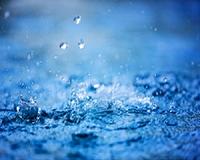 |
Chicago (UPI) Sep 13, 2010 A new biochemical carbon dioxide water purification process from Krebs & Sisler energy firm halves the cost of turning effluent and salt water into a potable drinking resource in a move with potential for use worldwide. U.S. government, military and corporate agencies spend billions on purifying water while prohibitive costs and lack of affordable means keeps safe water out of the reach of hundreds of millions of people worldwide. Krebs & Sisler's method combines photosynthesis with photocatalysis to treat impure water and turn it into safe water, the company explained. The method involves water purification through a rapid growth in biomass, which also can be harvested and used for human or animal consumption. The treatment method is expected to produce potable water for half the cost of reverse osmosis -- most commonly known to purify seawater as drinking water -- in large continuous-flow volumes while the biomass is produced and separated for consumption. As the storehouse for atmospheric oxygen, carbon dioxide is the resource for recycling both oxygen and carbon. With the new process it can be separated through photosynthesis at a high rate. As the CO2 is separated the carbon grows biomass and the oxygen is released to enrich the air. The process is good for salt water, sewage and industrial wastewater, the company said. The biomass is produced by the concurrent use of photosynthesis and photocatalysis. Light emitting diode lighting and CO2 and balanced nutrients unite, growing a biomass from species of algae such as Spirulina. The biomass growth rate in deep well-lighted enclosed cells is expected to exceed 100 times the natural rate because all factors related to culturing the algae can be optimized in the continuous hydroponic process, the company said. Algae biomass absorbs minerals dissolved in water and also the minerals contained in organic and inorganic compounds when they are released by the photochemical action of photocatalysis. Photosynthesis purifies the water by mineral absorption given sufficient light, CO2, nutrients and time. The resulting biomass is 50 percent carbon and may be dried for fuel, a farm animal feed supplement or human nutrient because of its high 60 percent protein and 20 percent carbohydrate values plus the presence of vitamins A, B and E. When released, the oxygen bound in CO2 can be released to fortify the atmosphere or for fuel combustion. Until recently the innovation wouldn't have seemed to attract investors because, to ensure it remains economically feasible, ample quantities of cheap carbon dioxide would be required for the project to remain feasible. But a potential source for inexpensive CO2 came on the horizon as oxygen combustion for electricity generation plants became more frequent. Now the abundance of cheap CO2 opens up possibilities of not letting it go waste and produce water instead. As it happens, experts said, CO2 water purification is the least-cost way to limit carbon dioxide in Earth's atmosphere.
Share This Article With Planet Earth
Related Links Water News - Science, Technology and Politics
 The Precious Commodity Of Water
The Precious Commodity Of WaterMunich, Germany (SPX) Sep 13, 2010 Water is a valuable resource, which is why the Fraunhofer Alliance SysWasser is demonstrating how we can extract precious drinking water from air, discover a leak in pipeline systems and even effectively clean sewage water at the IFAT/Entsorga fair. As the General Assembly of the UN resolved on July 28 of this year, clean drinking water and basic sanitary provision are human rights. Unfort ... read more |
|
| The content herein, unless otherwise known to be public domain, are Copyright 1995-2010 - SpaceDaily. AFP and UPI Wire Stories are copyright Agence France-Presse and United Press International. ESA Portal Reports are copyright European Space Agency. All NASA sourced material is public domain. Additional copyrights may apply in whole or part to other bona fide parties. Advertising does not imply endorsement,agreement or approval of any opinions, statements or information provided by SpaceDaily on any Web page published or hosted by SpaceDaily. Privacy Statement |